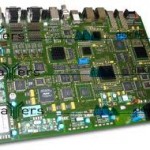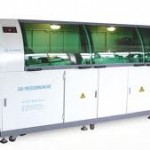There’s more to the Internet of Things than just deciding upon the desired outcome, designing and selecting the appropriate hardware, software and network infrastructure required to enable things to communicate with each other. You may even have systems in place to analyse data from the system as described in our previous article about the industrial Internet.
However you can take the system further – by planning the processes of how various entities can work together to find synergy and more opportunity from the investment. These entities can be classed as individual Internet of Things installations. Some organisations such as Cisco Systems have even coined a new term – the “Internet of Everything” – which takes into account the people, data, things – and the processes of how they can all work together.
This is an interesting development and not one unique to any particular manufacturer. However “uniqueness” in itself a possible hindrance when designing a system – as lack of compatibility with other systems can be a downfall over the longer term. So as part of the design process, you need to decide whether or not you want your system to communicate with others for the benefit of all involved.
In doing so the linked systems can work more efficiently together and make life easier for all. This involves coordinating various events in a way that may have been normally achieved by a person who would normally use two or more disparate systems at once to achieve a single goal. In other words – taking intelligent decision making to the next level.
This level of integration can be found in many areas, such as the consumer device and industrial fields. Let’s consider some broad examples of how processes can match two different systems to meet a common goal for the end user.
Traffic and vehicle systems – The ability to monitor traffic on major roads and arterials is nothing new, however the data generated can of course be used to broadcast traffic data for external services, alter signal timings, variable speed signs and other notices to motorists. Furthermore some vehicles now have GPS receivers which are pre-programmed with static speed limits and other warnings.
As a motorist your ultimate goal is to get to your destination as safe and as fast as legally possible. If the IoT system in the vehicle could interact with the separate traffic system – by submitting location and planned destination – a customised live route plan could be sent to the vehicle directing the driver to the optimum route. The vehicle could also take fuel consumption into account, the distance to travel – and interrogate the traffic system for the location of the nearest service station if required.
Commercial interests could also integrate live fuel pricing into the system to allow the vehicle to select the cheapest fuel as well. Finally the law enforcement aspect can also create some interesting scenarios that may not be popular with all – but useful to administration. Nevertheless all of these functions then remove the tasks away from the driver, allowing them to focus on driving and safety.
By re-engineering or installing new zone-based air conditioning systems into the building that allow greater control of output to various areas or zones, and individually-controlled hot water systems for each room (or each floor) the ability to shut down complete areas when required can be possible.If the hotel’s booking system could allow bookings to occur in certain areas – for example booking rooms in sequential order, whole zones or floors can be kept full with guests, and empty with vacant rooms. By creating processes for the booking system to communicate with the HVAC/water system – the minimum of energy required for booked rooms could be used and vacant areas could be shut down.
With customers pre-booking check-in times – individual hot water systems could be only activated a few hours before guest arrival and shut down until the next booking – saving more energy. Furthermore by capturing weather data and understanding the seasons, the booking system could ensure guests are booked into the cooler or warmer side of the building – thus reducing the impulse to “turn up the heat” or “crank up the air conditioning” upon arrival.As you can easily imagine, a fair amount of planning needs to be taken into consideration with regards to the processes involved in Internet of Things systems that may need to work together.
Even if you aren’t considering system interoperability – adding the ability for data interchange with other systems should be considered to avoid future obsolescence.Just as in the 1980s a wide variety of computer systems was reduced to a handful – in the 21st century connected technology in our “Internet of Everything” will need to work together in order to find success. Planning is the key, and understanding the requirements is paramount.If you have the needs, the ideas – and want to move forward with intelligent systems – you will set your organisation on the path to increased efficiency and profitability – and this is where the LX Group can partner with you for your success.
We can discuss and understand your requirements and goals – then help you navigate the various hardware and other options available to help solve your problems. We can create or tailor just about anything from a wireless temperature sensor to a complete Internet-enabled system for you. For more information or a confidential discussion about your ideas and how we can help bring them to life – click here to contact us, or telephone 1800 810 124.
LX is an award-winning electronics design company based in Sydney, Australia. LX services include full turnkey design, electronics, hardware, software and firmware design. LX specialises in embedded systems and wireless technologies design. https://lx-group.com.au
Published by LX Pty Ltd for itself and the LX Group of companies, including LX Design House, LX Solutions and LX Consulting, LX Innovations.



